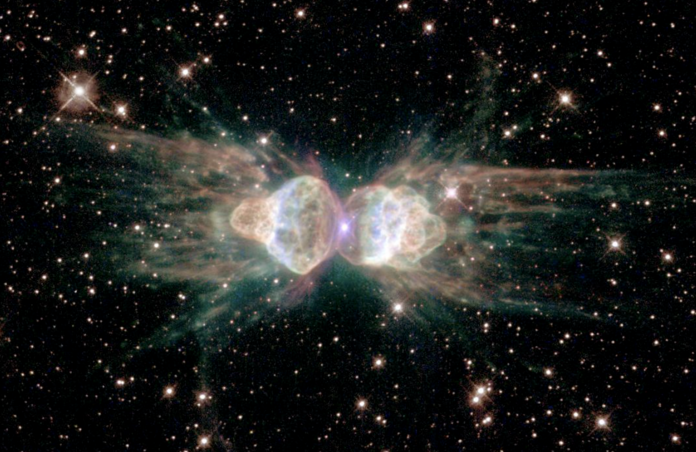The Menzel catalog

When I downloaded the recent 1-Click Observation narrowband data for the Ant Nebula, I did not know that this object’s designation was Menzel 3. I had not heard of a Menzel catalog before, so I set off once again to do some homework to learn what I thought was going to be yet another comprehensive catalog set of astronomical objects to learn about.

Dr Donald H. Menzel was a Professor of Astrophysics at Harvard University for over 30 years. He is known for many achievements, including discovering the physical properties of the solar chromosphere; a direct consequence of his initial interest in astronomy being sparked when he observed a solar eclipse in 1918 as a teen and a bright nova soon after that. Dr Menzel is also known for his work on the chemistry of stars and the nature of gaseous nebulae. However, it seems he was the among the first, if not the first scientist to successfully begin to apply quantum mechanics to astronomical spectroscopy.
However, as far as the catalog of astronomical objects with his name associated to them, it appears there are only 3 and they are all planetary nebulae. Dr Menzel discovered all three objects in 1922 when he was 21 years old and why they have his name on them. Apparently he was observing or studying the constellation of Norma, The Carpenter’s Square in the Southern Hemisphere since all 3 of these Planetary Nebulae reside in this constellation.

Menzel 1 is a 12th magnitude Planetary Nebula that is about 4,500 light years from us and has a physical diameter of about 1 light year.

Menzel 2 is the second Planetary Nebula he discovered in Norma with a similar magnitude to Menzel 1. This particular posted image was entered in the Hubble’s Hidden Treasures image processing competition by Serge Meunier in October 2015.

Menzel 3 is the most famous of the 3 objects as it is also known as the Ant Nebula. It is a 14th magnitude Planetary Nebula, but lies somewhere between 8,000 and 11,000 light years away depending on which source you consult and has a physical diameter of 1 to 2 light years.
Prior to his death in 1976, Harper Collins published Dr Menzel’s first edition of A Field Guide to the Stars and Planets which turned out to be a quite popular book. A specific feature of this work is that Dr Menzel categorizes all 88 modern astronomical constellations that are recognized by the IAU into 8 separate families or groupings as a way to help people learn where all the constellations are located in the sky. A student of his helped edit later editions of this book and it has since evolved to become one of the Peterson Field Guides.
As always, stay safe and get your neighbors to keep their outside lights off…
Image Credits:
Dr Menzel; Havard-Smithsonian Center for Astrophysics
Menzel 1; European Southern Observatory (ESO)
Menzel 2; ESA/Hubble & NASA; Serge Meunier
Menzel 3; NASA ESA & Hubble Heritage Team; R. Sahai (JPL), B. Balick (University of Washington)
This blog post was originally published in our Telescope Live Community.
The Community represents Telescope Live's virtual living room, where people exchange ideas and questions around astrophotography and astronomy.
Join the conversation now to find out more about astrophotography and to improve your observation and post-processing skills!
